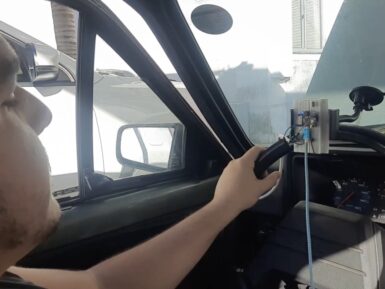
Arduino Nano Matter
The Arduino Nano Matter stems from a partnership between Arduino and Silicon Labs® to make Matter®, one of the most popular IoT connectivity standards for smart home devices, accessible to all.
Overview
Nano Matter merges Arduino’s signature ease of use with with the powerful Silicon Labs® MGM240S, wrapping the best of two worlds into one of the smallest form factors currently on the market. Experimenting with Matter-compatible devices has never been easier!
With Nano Matter, makers – at all levels of expertise – can leverage the popular Matter IoT connectivity standard to build interactive solutions, upgrade previous Nano-based projects to fully function as smart home devices, and even experiment with protocols like Zigbee® and OpenThread.
Key benefits include:
- Matter-ready for quick prototyping, thanks to hardware support and a user-friendly software layer.
- Based on the MGM240SD22VNA from Silicon Labs, a 32-bit Arm® Cortex®-M33.
- Secure Vault™ technology: enjoy industry-leading, state-of-the art security from Silicon Labs against escalating IoT threats.
- Multiprotocol connectivity enables 802.15.4 (Thread) and Bluetooth® Low Energy
- Nano-family compact size and pinout.
- Debugging over USB via SWD interface: no external debugging probe needed!
- Low energy consumption, designed for battery powered IoT devices.
Need Help?
Check the Arduino Forum for questions about the Arduino Language or how to make your own Projects with Arduino. If you need any help with your product, please contact the official Arduino User Support through our Contact us page.
 The Matter Color Light will be the only officially Matter-certified profile for the Nano Matter. Currently under certification.
The Matter Color Light will be the only officially Matter-certified profile for the Nano Matter. Currently under certification.
Tech specs
| Microprocessor | MGM240SD22VNA (32-bit Arm® Cortex®-M33 with DSP instruction and FPU) |
| Connectivity | 802.15.4 (Thread), Bluetooth® Low Energy 5.3, Bluetooth® Mesh, Matter-ready Smart Home Connectivity |
| Memory | 1536 kB Flash, 256 kB RAM |
| USB Connector | USB-C® |
| Security | Secure Vault™ High |
| Debugging | Over USB |
| UART | 2 |
| I2C | 2 |
| SPI | 2 |
| Digital I/O | 22 |
| Analog Inputs | 20 (12 bits resolution) |
| DAC | 4 (8-12 bits resolution) |
| PWM pins | 22 (A maximum of 5 pins simultaneously) |
| External interrupts | Available within all Digital pins |
| User Interface | On-board RGB LED, User pushbutton |
| Circuit operating voltage | 3.3 V |
| Input Voltage (VIN) | 5 V |
| Source Current per I/O Pin | 40 mA |
| Sink Current per I/O Pin | 28 mA |
| Clock Speed | 78 MHz |
| Antenna On-board | 2.4 GHz |
| Dimensions | 18x45 mm |
| Environmental Temperature | -40 °C to + 85 °C |
Conformities
Resources for Safety and Products
Manufacturer Information
The production information includes the address and related details of the product manufacturer.
Arduino S.r.l.
Via Andrea Appiani, 25
Monza, MB, IT, 20900
https://www.arduino.cc/
Responsible Person in the EU
An EU-based economic operator who ensures the product's compliance with the required regulations.
Arduino S.r.l.
Via Andrea Appiani, 25
Monza, MB, IT, 20900
Phone: +39 0113157477
Email: support@arduino.cc
Documentation
Learn more
Get Inspired

Combine the Alvik, Modulinos, Nano ESP32 and the Nicla Vision to create a robot that can respond to your greeting!

Shortly after attending a recent tinyML workshop in Sao Paolo, Brazil, Joao Vitor Freitas da Costa was looking for a way to incorporate some of the technologies and techniques he learned into a useful project. Given that he lives in an area which experiences elevated levels of pickpocketing and automotive theft, he turned his attention to a smart car security system. His solution to a potential break-in or theft of keys revolves around the incorporation of an Arduino Nicla Vision board running a facial recognition model that only allows the vehicle to start if the owner is sitting in the driver’s seat. The beginning of the image detection/processing loop involves grabbing the next image from the board’s camera and sending it to a classification model where it receives one of three labels: none, unknown, or Joao, the driver. Once the driver has been detected for 10 consecutive seconds, the Nicla Vision activates a relay in order to complete the car’s 12V battery circuit, at which point the vehicle can be started normally with the ignition. Through this project, da Costa was able to explore a practical application of vision models at-the-edge to make his friend’s car safer to use. To see how it works in more detail, you can check out the video below and delve into the tinyML workshop he attended here.










